
FLUTTERING BEAUTY
The design of Fluttering Butterfly Dance is agile and graceful, with smooth and natural lines, giving people a sense of light and airy beauty.
As an ancient civilization with a long history, China has a unique heritage and development of palace jewelry craftsmanship. During the Tang Dynasty, palace jewelry reached its peak, characterized by exquisite techniques, magnificent styles and rich cultural connotations. The court jewelry of the Tang Dynasty was mainly made of gold, jadeite, and pearls, and the craftsmanship emphasized fine carvings, such as filigree inlays, gold inlays, and jade inlays, etc., which made the jewelry more visually layered and delicate.
European court jewelry reached its peak during the Renaissance and Baroque periods, characterized by exquisite inlay techniques, delicate metalwork and unique artistic styles. Renaissance jewelry focused on the natural beauty and harmony of the human body, such as through carving and inlay techniques to highlight the natural beauty of the gemstones; Baroque jewelry is more emphasis on the magnificent and complicated style, such as the use of a large number of gold and gemstones to create a unique artistic effect. The cultural value of European court jewelry lies in the fact that it carries the authority and dignity of the royal family, and at the same time reflects the aesthetic style and artistic pursuit of the society at that time. The jewelry design of the European Renaissance was influenced by ancient Greek and Roman culture, such as the use of classical themes and architectural elements; while the jewelry of the Baroque period embodied the luxury and romanticism of the European court.
Although the crafts and cultures of Chinese and European court jewelry have different historical backgrounds and development trajectories, they both exhibit their own unique charms and values. In terms of materials, Chinese court jewelry emphasized the use of natural gemstones and metals, while European court jewelry emphasized the matching and inlaying of various kinds of gemstones. In terms of craftsmanship, the techniques of Chinese court jewelry were more exquisite and unique, such as filigree inlay, while European court jewelry placed more emphasis on the innovation of metal processing and inlay techniques.
The value of ancient palace jewelry lies not only in its exquisite craftsmanship and unique aesthetic value, but also in the historical and cultural information it carries. As witnesses to historical events and carriers of cultural heritage, ancient palace jewelry provides valuable clues for us to understand the politics, economy and culture of ancient societies. In addition, ancient palace jewelry is also a source of inspiration for modern design and art creation, from which we can draw inspiration and explore new ways of expression.
Ancient court jewelry, as an important legacy of Eastern and Western cultures, demonstrated the style of different historical periods and social cultures with its exquisite craftsmanship and unique cultural connotations. By comparing and analyzing the craftsmanship and culture of Chinese and European court jewelry in their heyday, we can better understand the characteristics and values of different regional cultures. At the same time, ancient palace jewelry also provides us with valuable inspiration and sources of inspiration, which are of great significance to modern design and artistic creation. Therefore, we should strengthen the research and protection of ancient palace jewelry, so that these splendid cultural heritages can be inherited and carried forward.

The design of Fluttering Butterfly Dance is agile and graceful, with smooth and natural lines, giving people a sense of light and airy beauty.
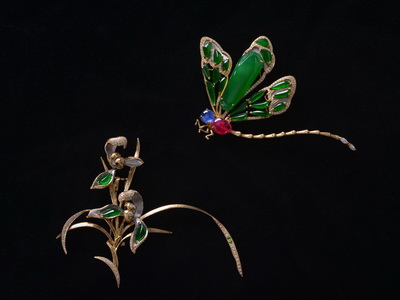
It seems to be quietly telling a romantic and mysterious story, which makes people can't help but fall for it.
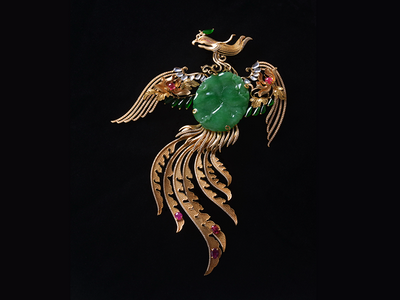
RuiHuangLaiYi: The phoenix is the king of all birds in ancient legends, the phoenix is the male, the phoenix is the female. This is a metaphor for auspicious signs and auspicious induction.
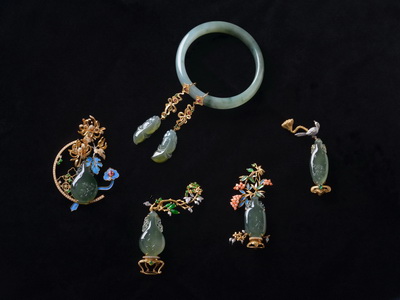
This set of jewelry means: all year round, wealth rolls in!
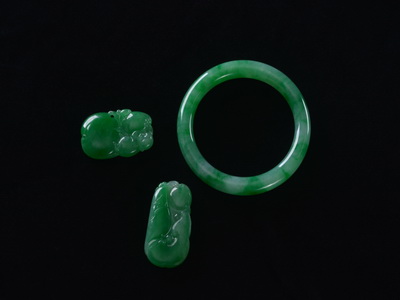
A symbol of luxury and longevity.
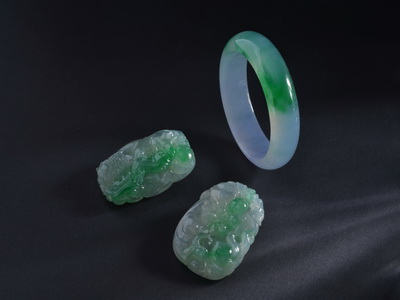
Beautiful ice three-color bracelet and longevity jade pendant, signifying wealth, longevity and happiness
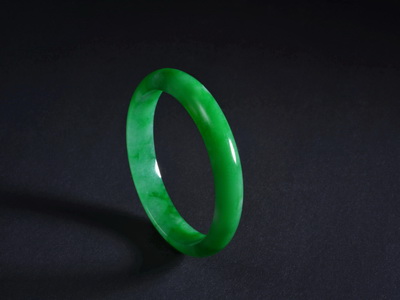
Full green jadeite reflecting the color of the moon, the jade is delicate and moist.

Top quality Hetian sheepskin jade, warm and peaceful
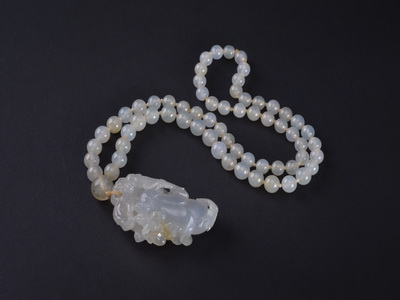
Exquisite connected pendant, elegant and honorable